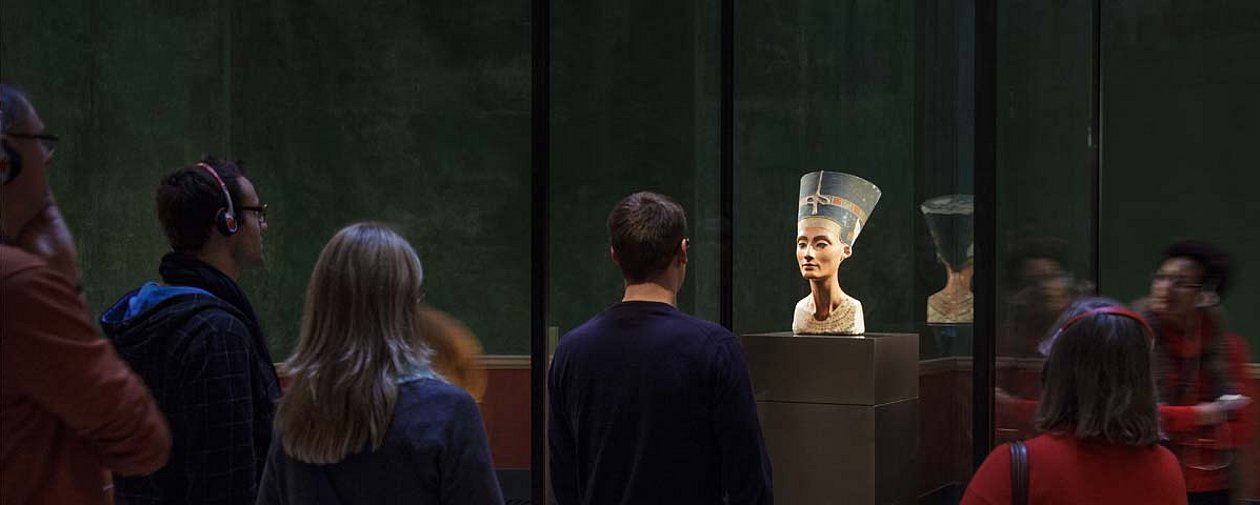Bereichsnavigation
National Museums in Berlin
Glimpses of the Staatliche Museen zu Berlin
21 museums document the evolution of human culture from its beginnings to the present.
Collections of Worldwide Attraction
21 museums preserve around 5.3 million objects from the areas of art, archaeology, and ethnology. Their collections are among the most significant in Europe in terms of breadth and quality. Together they enjoy world-class standing. The museums also include three renowned research institutes and the Gipsformerei (Replica Workshop).
More than four million people visit the museums every year. The Museuminsel Berlin (Museum Island Berlin), a World Heritage Site, with its five buildings is the most popular destination. Diverse educational programs, thematic tours and opportunities to get involved invite visitors to discover the world of the museums.
The Museumsinsel as Origin of Berlin’s Museum Landscape
The Staatliche Museen zu Berlin were founded in 1823 as the Königliche Museen (Royal Museums). The present Altes Museum opened in 1830 as the first civic museum in Berlin. Over the course of a century, other museums were added on the site between the Spree and the Kupfergraben to form an ensemble. The creation of the Museumsinsel was also inspired by the idea of a “sanctuary for art and science.” It is the nucleus of Berlin’s museum landscape. Today they also have museums and institutes at other locations in the city.
The Redesign of Berlin’s Historical Center
The reconstruction of the historical buildings on Berlin’s Museumsinsel and the modernizing developments to the ensemble is the Foundation’s largest construction project. To that end, it established the Museumsinsel Master Plan in 1999. With the Humboldt-Forum on Schlossplatz across the boulevard Unter den Linden, a site of world cultures was created. The museums present their non-European collections there, in the immediate vicinity of the art and culture of the Museumsinsel.
Research in a Variety of Fields and Cross-Disciplines
The museums continue the Prussian tradition of combining art and science. Today they form a research institution. Their scientific activities are fundamentally shaped by their own holdings and the history of their collections. Their primary subject areas are archaeology, art history, cultural studies, and ethnology. Additionally, they engage in cross-disciplinary studies. These involve the natural sciences such as conservation science.


